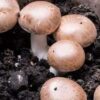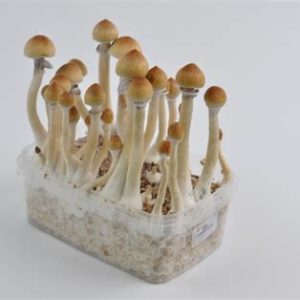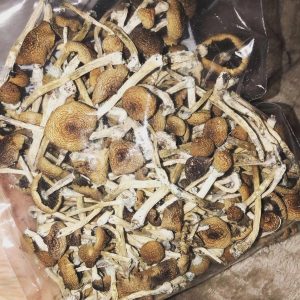No products in the cart.
$250.00 – $1,300.00
SKU: N/A Category: Medicinal mushrooms Tags: 1 gram dried shrooms, 1 gram of dried shrooms, 1.4 grams of dried shrooms to trip, 2 grams of shrooms, 2 grams puff dried shrooms, 2g dried shrooms, 3.5 grams of dried shrooms, 35mg psilocybin converts to what in dried shrooms, 8th of shrooms, acid vs shrooms, agaricus arvensis mushroom, agaricus arvensis mushroom expert, agaricus bisporus, agaricus bisporus mushroom benefits, Agaricus campestris, agaricus campestris mushroom, agaricus campestris mushroom expert, Agaricus Campestris Mushrooms, Agaricus Campestris Mushrooms (Meadow Mushroom), air fry fresh mushrooms, air fryer fresh mushrooms, albino shrooms, alcohol and shrooms, amanita muscaria spores, amanita muscaria spores for sale, amazon mushroom spores, amazonian mushroom spores, ape mushroom spores, arbor shrooms, are agaricus mushrooms edible, are fresh mushrooms good for you, are magic mushroom spores legal, are medicinal mushrooms safe, are medicinal mushrooms safe during pregnancy, are mushroom spores dangerous?, are mushroom spores legal?, are shrooms addictive, are shrooms bad for you, are shrooms illegal, are shrooms legal, are shrooms safe, ayahuasca for sale, ayahuasca near me, b+ mushroom spores, benefits of medicinal mushrooms, benefits of psychedelics, best magic mushroom spores, best medicinal mushrooms, best medicinal mushrooms for anxiety, best medicinal mushrooms for depression, best medicinal mushrooms for gut health, best medicinal mushrooms for immunity, best movies to watch on shrooms, best mushroom spores, best place to buy magic mushroom spores, best place to buy mushroom spores, best place to buy shrooms, best spore vendor 2021, best way to eat dried shrooms, best way to eat shrooms, best way to store dried shrooms, best way to store fresh mushrooms, best way to take dried shrooms, best way to take medicinal mushrooms, best way to take shrooms, bioluminescent mushroom spores, blue meanie mushroom spores, books on medicinal mushrooms, bulk dried mushrooms, bulk mushrooms, button mushroom, button mushroom spores, buy fresh mushrooms, buy fresh mushrooms online, buy magic mushroom spores, buy magic mushroom spores online, buy medicinal mushrooms, buy mushroom online, buy mushroom spores, buy mushroom spores online, buy mushrooms, buy mushrooms online, buy psilocybin mushroom spores, buy psychedelic mushroom spores, buy shrooms, buy shrooms california, buy shrooms canada, buy shrooms colorado, buy shrooms dc, buy shrooms denver, buy shrooms in colorado, buy shrooms in dc, buy shrooms in denver, buy shrooms in michigan, buy shrooms in oakland, buy shrooms in oregon, buy shrooms in portland, buy shrooms near me, buy shrooms nyc, buy shrooms oakland, buy shrooms online, buy shrooms online canada, buy shrooms online reddit, buy shrooms online us, buy shrooms online usa, buy shrooms oregon, buy shrooms reddit, buy shrooms usa, buying mushroom spores, buying mushrooms online, calories in fresh mushrooms, can dogs eat fresh mushrooms, can dried shrooms go bad, can dried shrooms reproduce, can fresh mushrooms be frozen, can fresh mushrooms be frozen for later use, can fresh mushrooms be frozen without cooking, can fresh mushrooms go bad, can i buy shrooms, can i buy shrooms in colorado, can i buy shrooms in denver, can i buy shrooms in oregon, can i buy shrooms online, can i freeze dried shrooms, can i freeze fresh mushrooms, can shrooms kill you, can u freeze fresh mushrooms, can u smoke shrooms, can you buy shrooms, can you buy shrooms in amsterdam, can you buy shrooms in california, can you buy shrooms in canada, can you buy shrooms in colorado, can you buy shrooms in dc, can you buy shrooms in denver, can you buy shrooms in michigan, can you buy shrooms in oakland, can you buy shrooms in oregon, can you buy shrooms in portland, can you buy shrooms in seattle, can you buy shrooms in vegas, can you buy shrooms legally, can you buy shrooms online, can you die from shrooms, can you eat agaricus mushrooms, can you eat dried shrooms, can you eat fresh mushrooms, can you freeze fresh mushrooms, can you freeze fresh mushrooms for later use, can you freeze fresh mushrooms raw, can you freeze fresh mushrooms without cooking, can you freeze fresh mushrooms without cooking them first, can you get spores from dried shrooms, can you grow mushrooms from dried shrooms, can you grow shrooms from dried shrooms, can you legally buy shrooms, can you od on shrooms, can you sleep on shrooms, can you smoke dried shrooms, can you smoke shrooms, can you take too many medicinal mushrooms, canned vs fresh mushrooms, canning fresh mushrooms, carbs in fresh mushrooms, chicken with fresh mushrooms, chinese medicinal mushrooms, chocolate shrooms, commercial mushroom growing, cooking fresh mushrooms, cooking with fresh mushrooms, cordyceps medicinal mushrooms, country fresh mushrooms, crockpot chicken and fresh mushrooms, cubensis mushroom spores, one ounce of dried shrooms, one up magic mushrooms, one up mushrooms, online mushrooms, order mushroom spores, order mushrooms online, ordering mushroom spores, oyster mushroom spores, paul stamets growing gourmet and medicinal mushrooms, penis envy chocolate, penis envy chocolate bar, penis envy mushroom chocolate, penis envy mushroom spores, poisonous agaricus mushroom, polka dot shrooms, pork chops with fresh mushrooms, portobello mushroom spores, premium spores, prices for dried shrooms, prices for dried shrooms 2019, psilocybe azurescens spores, psilocybe cubensis spore print, psilocybe mushroom spores, psilocybe tampanensis, psilocybe tampanensis spores, psilocybin mushroom for sale, psilocybin mushroom spores, psilocybin mushroom spores etsy, psilocybin mushroom spores for sale, psilocybin near me, psychadelic mushroom spores, psychadelic mushrooms for sale, psychedelic mushroom chocolate bars for sale, psychedelic mushroom spores, psychedelic mushroom spores for sale, psychedelic mushroom spores legality, psychedelic mushrooms spores, psylocibin mushroom spores, psylocybin near me, puffball mushroom spores, put dried shrooms in brownies, recipes using fresh mushrooms, recipes with fresh mushrooms, reddit where to buy shrooms, reishi mushroom spores, sex on shrooms, shaman mushroom spores, shaman mushroom spores coupon code, shaman mushroom spores review, shaman mushroom spores reviews, shelf life of dried shrooms, shelf life of fresh mushrooms, shiitake mushroom spores, should you wash fresh mushrooms, shrooms, shrooms and alcohol, shrooms and depression, shrooms and weed, shrooms chocolate, shrooms chocolate bar, shrooms dosage, shrooms drug, shrooms effect, shrooms for sale, shrooms grow kit, shrooms high, shrooms legal, shrooms meaning, shrooms microdose, shrooms movie, shrooms near me, shrooms reddit, shrooms side effects, shrooms vs acid, shrooms vs lsd, shrooms weed, side effects of medicinal mushrooms, side effects of shrooms, six cancer fighting medicinal mushrooms, skyward sword mushroom spores, smoking shrooms, sodium in fresh mushrooms, spore store, spores 101, spores store, spores101, spores101 review, sporestore, sporetraders, starry night spores, store fresh mushrooms, storing dried shrooms, storing fresh mushrooms, strongest dried shrooms, sun dried shrooms, taking shrooms, the meadow mushroom, the oracle spore shop, things to do on shrooms, tidal wave mushroom spores, top medicinal mushrooms, turkey tail mushroom spores, turkey tail mushrooms for sale, types of medicinal mushrooms, types of shrooms, using dried shrooms to grow, using dried shrooms to make shrooms, weed and shrooms, weight of dried shrooms per cake, were to buy shrooms, west virginia mushrooms, What Are Agaricus Campestris Mushrooms?, what are medicinal mushrooms, what are mushroom spores, what are shrooms, what do dried shrooms look like, what do mushroom spores look like, what do shrooms do, what do shrooms do to you, what do shrooms feel like, what does a gram of dried shrooms look like
Buy Agaricus Campestris Mushrooms online (meadow mushroom For Sale)
Meadow mushroom For Sale. The most popular wild mushroom in Britain and Ireland is the field mushroom, Agaricus campestris. These mushrooms of the summer and early fall can occasionally be found in great quantities in meadows where sheep, cattle, or horses graze, but sadly this is not often the case. It is not advisable to consider cap color to be a key characteristic when identifying these kinds of mushrooms. While some Field Mushrooms are extremely rough with dark-brown cap scales, others are smooth and nearly pure white. Agaricus campestris mushroom.
Field mushrooms are widely available and frequent in Britain and Ireland and are found all around the world. The majority of Europe, North Africa, Asia (including India, China, and Japan), as well as the USA, Canada, and Australia, are all regions where they are present.
The Field Mushroom still goes by the binomial scientific name Agaricus campestris, which Carl Linnaeus gave it when he first described it in 1753. Since then, two extremely uncommon (in Britain) variants have been identified, resulting in the official designation of the nominate variety as Agaricus campestris var. campestris L. Pratella campestris (L.) Gray, Psalliota campestris (L.) Quél., and Psalliota flocculosa Rea are all names for species that are similar to Agaricus campestris. What Are Agaricus Campestris Mushrooms? .
Psalliota campestris, a formerly common synonym for Agaricus campestris, the Field Mushroom, can be found in some older texts because for a long time \’true mushrooms\’ that are now classified as Agaricus species were given the generic name. This name was derived from a Greek word referring to their stem rings. Agaricus campestris.
The frequently consumed and grown button mushroom, Agaricus bisporus, is strikingly similar to the white-fleshed Agaricus campestris. Although widely known and found all over the world, Agaricus campestris may currently be less prevalent due to habitat loss and chemical treatments. In North America, this mushroom is often referred to as the meadow mushroom or the field mushroom. Previously classified as the Agaricus species, the \”true mushrooms\” were known as Psalliota. Psalliota refers to their stem rings in Greek, and Psalliota campestris used to be a well-known alternative name for the field mushroom Agaricus campestris. Psalliota campestris (L.) Quél., Pratella campestris, Psalliota flocculosa Rea, and var. campestris are other synonyms. Meadow Mushroom.
As its Latin names imply, meadow mushrooms typically appear in the late summer or early fall following rainfall. They can be found in meadows, fields, and other grassy locations like playing fields, beside pathways, and parks. Agaricus campestris can have a stocky appearance and an early ring or skirt around the stem; the ring appearance fades but a trace may be visible. Some claim that a reliable way to identify a meadow mushroom is by the way the cuticle hangs over the cap. Identifying the Field Mushroom.
How To Identify And Describe Agaricus Campestris Mushrooms

Cap: A fleshy, white cap with a diameter of 3 to 10 cm that is shaped like a hemisphere but flattens out more as it ages.
Gills: Radiating gills that are packed, detached from the stem, and start out pink before turning dark-brown over time.
Stem: The stem, which raises the cap and is 3–10 cm tall and around 1-2 cm in diameter, may have a fleshy, light pink appearance. The look could be scaly or smooth.
Smell: Mushroomy aroma.
Taste: Pleasant flavor and taste it has.
Spores: 6.5-8.5 x 4-5 mm; microscopic analysis of the spores is required to precisely determine its identity.
Spore color: Brown in color, the spores.
Edibility: Eating.
Habitat: In grassy regions like lawns, fields, and meadows, on the ground. seen alone, in small groups, or occasionally in \’fairy\’ rings.
Environment: saprobic.
Basidiomycota, Agaricomycetes, and Phylum are the scientific classifications.
Family Agaricaceae; Order Agaricales; Genus Agaricus.
Similar & Look-Alike Mushrooms
Although bigger than Agaricus campestris, Agaricus arvensis (the Horse mushroom) starts out with a similar white crown before turning more yellow as it ages. Because Amanita virosa, sometimes known as the \”destroying angel,\” is toxic and resembles Agaricus campestris, care should be used when foraging for wild mushrooms. Similar to agaricus, agaricus xanthodermus (the yellow stainer) can upset your stomach and leave you with a yellow stain. Agaricus campestris.
Benefits of Agaricus campestris
Psalliota campestris, an extract from Agaricus campestris, is reported for use in cosmetics, particularly for its skin-conditioning effects. It\’s interesting to note that meadow mushroom has been referred to as a bio-indicator for trace quantities of silver discovered in its growing medium. In addition, it may have the potential to be used in soil purification following exposure to motor oil in the environment. This may offer novel properties for fungi, and/or this genus or species in particular, in environmental cleanup chores, although more research is necessary. Hunting and cooking agaricus campestris.
Some mushroom species in the Agaricus genus have been said to have a variety of therapeutic uses. Agaricus campestris was successfully used to treat typhoid in Calcutta as early as the 1950s. Since then, additional research has revealed additional possible medicinal advantages, such as those of antioxidants, cytotoxic mushrooms, blood glucose regulators, and anti-microbials. Nutritionally speaking, the fruiting body\’s fatty acid composition revealed that linoleic acid was the major fatty acid. An essential fatty acid that must be included in the human diet is linoleic acid. the meadow mushroom.
(1).Anti-oxidant
Oxidative stress and damage can cause diseases like cancer to progress. Agaricus campestris was found to reduce the cellular damage and death of cells they were exposed to when hydrogen peroxide was present, offering an important natural option for oxidative damage protection. Hydrogen peroxide is one of the most aggressive free radicals that can cause cellular damage. Meadow Mushroom (Agaricus campestris).
(2).Anti-cancer
Breast carcinoma (MCF-7) and laryngeal carcinoma (HEp-2) cancer cells were used to test Agaricus campestris\’ cytotoxic effects. Hexane was used as the solvent to extract the chemicals, and it showed a cytotoxic potential, showing that it may in vitro kill cancer cells. how to cook agaricus campestris mushrooms.
(3).Anti-diabetic
Agaricus campestris increased the production of secretions that regulate blood glucose levels by having opposing effects – insulin and glucagon, which, respectively, reduce and increase blood glucose levels, according to early experiments examining insulin release from rat pancreatic islet cells. Agaricus campestris was given to a mouse model of diabetes to reduce the hyperglycemia that was produced, both through diet and water consumption. By day 12, the levels were remarkably close to those of control mice without diabetes. The dosage was 2.5 g/l in place of drinking water and 62.5 g/kg of food. In vitro, Agaricus campestris enhanced glucose absorption and accelerated the conversion of glucose to glycogen (glucogenesis), both of which are dysfunctional in diabetes. The outcomes with Agaricus campestris alone were comparable to those with Agaricus campestris combined with insulin. Are agaricus mushrooms edible.
(4).Anti-microbial
Alternative therapies are necessary since pathogenic bacteria are resistant to drugs. Agaricus campestris extract made from methanol has its anti-microbial properties tested. Bacillus subtilis, Proteus vulgaris, Pseudomonas aeruginosa, and Candida albicans growth was inhibited, according to the study. A second investigation verified that Clostridium perfringens, a gram-positive bacterium found in food, was inhibited by wild Agaricus campestris. can you eat agaricus mushrooms.
Dosage For Agaricus Campestris

The edible mushroom Agaricus campestris contains valuable nutrients, although these values can differ between mushroom species due to the great variety of chemicals and the extraction solvent utilized. Agaricus arvensis mushroom.
Side Effects & Toxicology of Agaricus Campestris
Long recognized as edible and non-toxic, agaricus campestris . To avoid coming into touch with hazardous species, it is vital to confirm that the meadow mushroom (Agaricus campestris) is the right species before eating. Agaricus arvensis mushroom expert.
However, The common supermarket button mushrooms (Agaricus bisporus), which are related to field mushrooms, are saprobic. Their mycelium consumes dead plant matter in the soil, such as grass roots. Although it is not unusual to see field mushrooms growing in fairy rings, they typically appear as lone individuals or in small, seemingly haphazard clusters. The meadows grazed by cart horses would turn white in the late summer when the Field Mushrooms fruited in prodigious amounts. My grandfather\’s fields were manually picked, and the hay was hauled away by horse-drawn carts. Even sixty years ago, picking as many mushrooms in a half-hour as one person could carry home was not unusual. how to grow agaricus mushrooms.
| Quantity | Ounce, Q pound, H pound, Pound |
|---|
Be the first to review “Agaricus Campestris Mushrooms (Meadow Mushroom)” Cancel reply
Related products
Psilocybin
$41.00 – $274.00
Sale!
Psilocybin
Dried Mushrooms
$85.00
Medicinal mushrooms
$250.00 – $1,300.00
Psilocybin
$12.00 – $224.00
Medicinal mushrooms
Agaricus Blazei Murrill (Subrufescens): Health Benefits & Identification
$250.00 – $1,300.00













Reviews
There are no reviews yet.